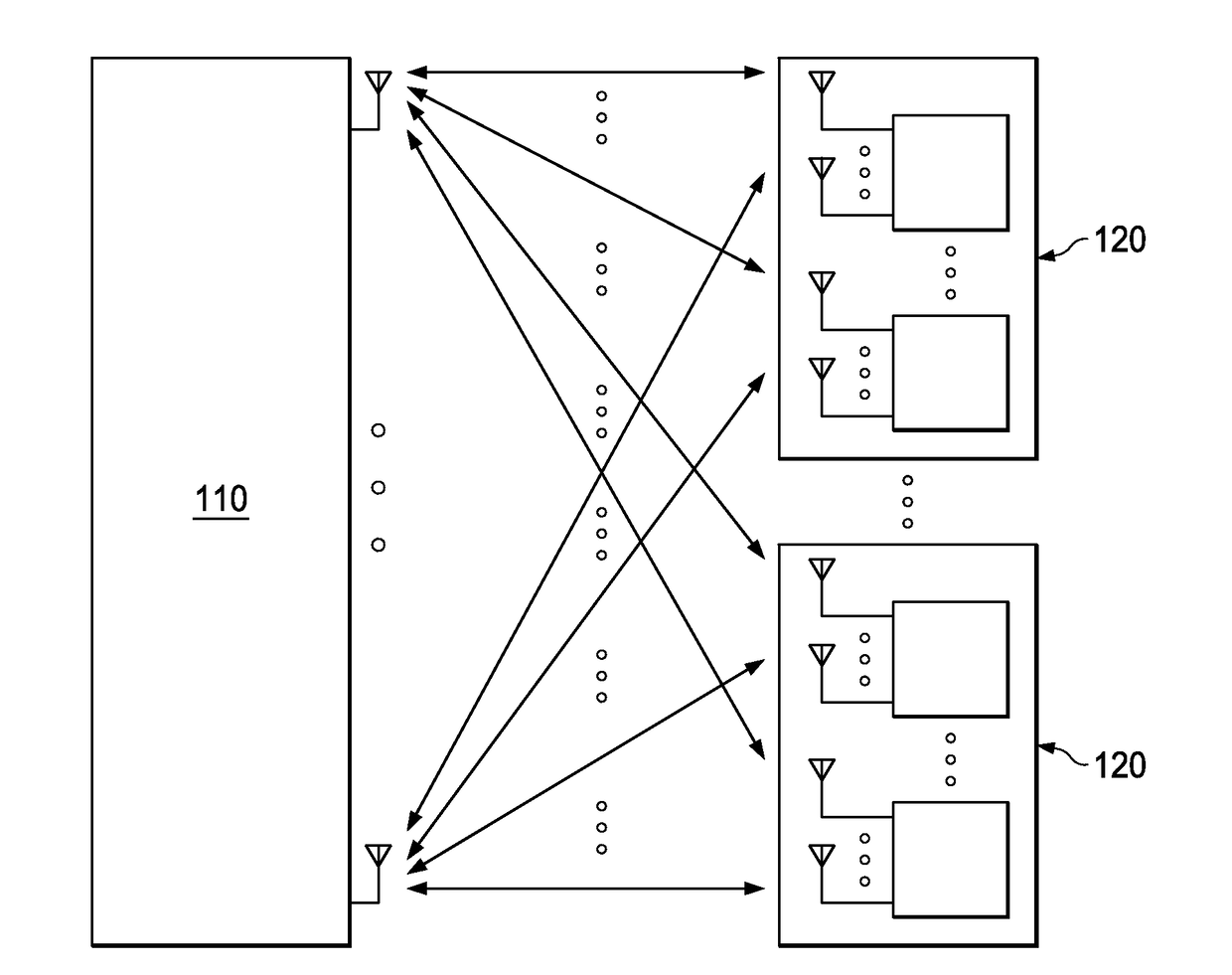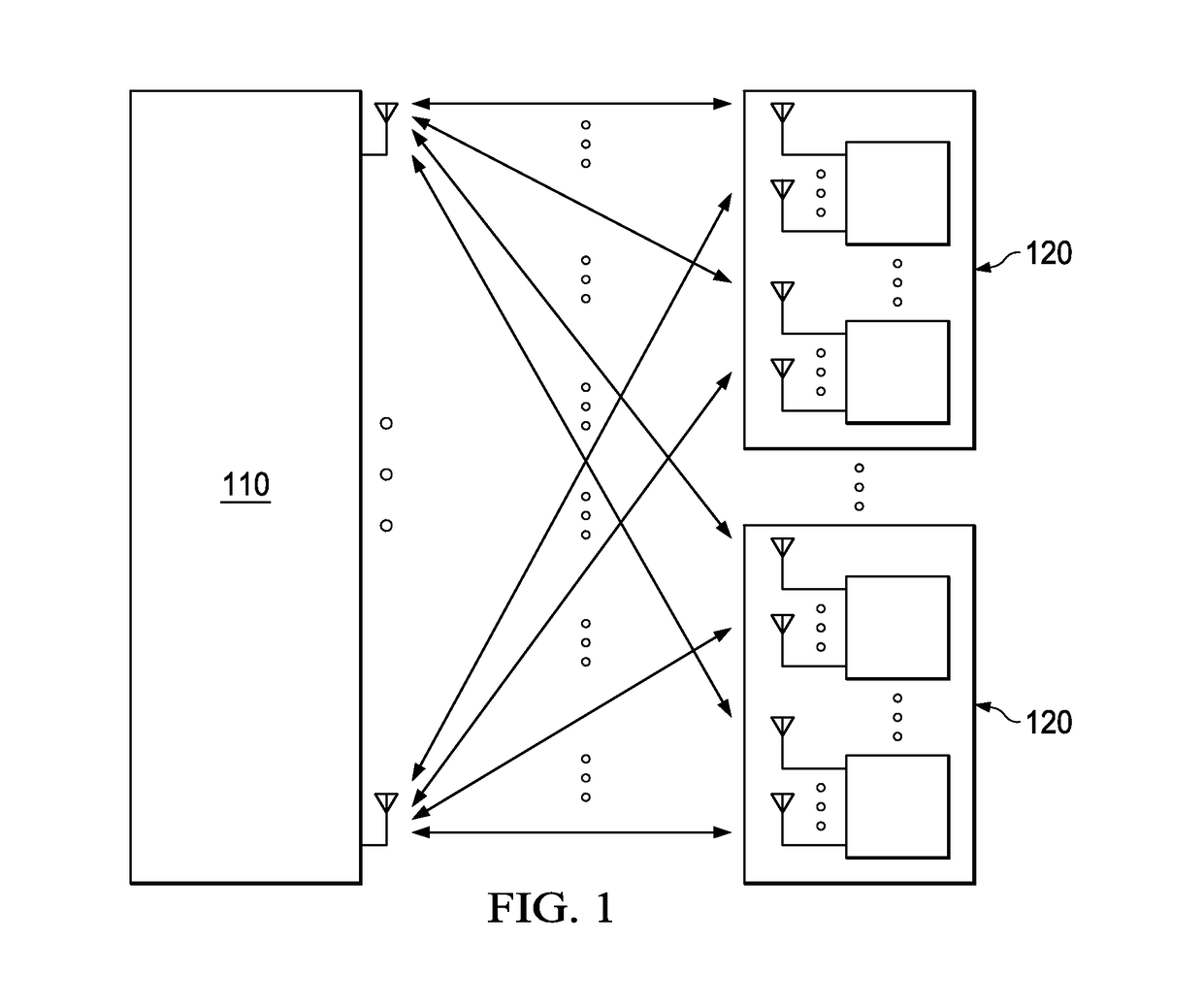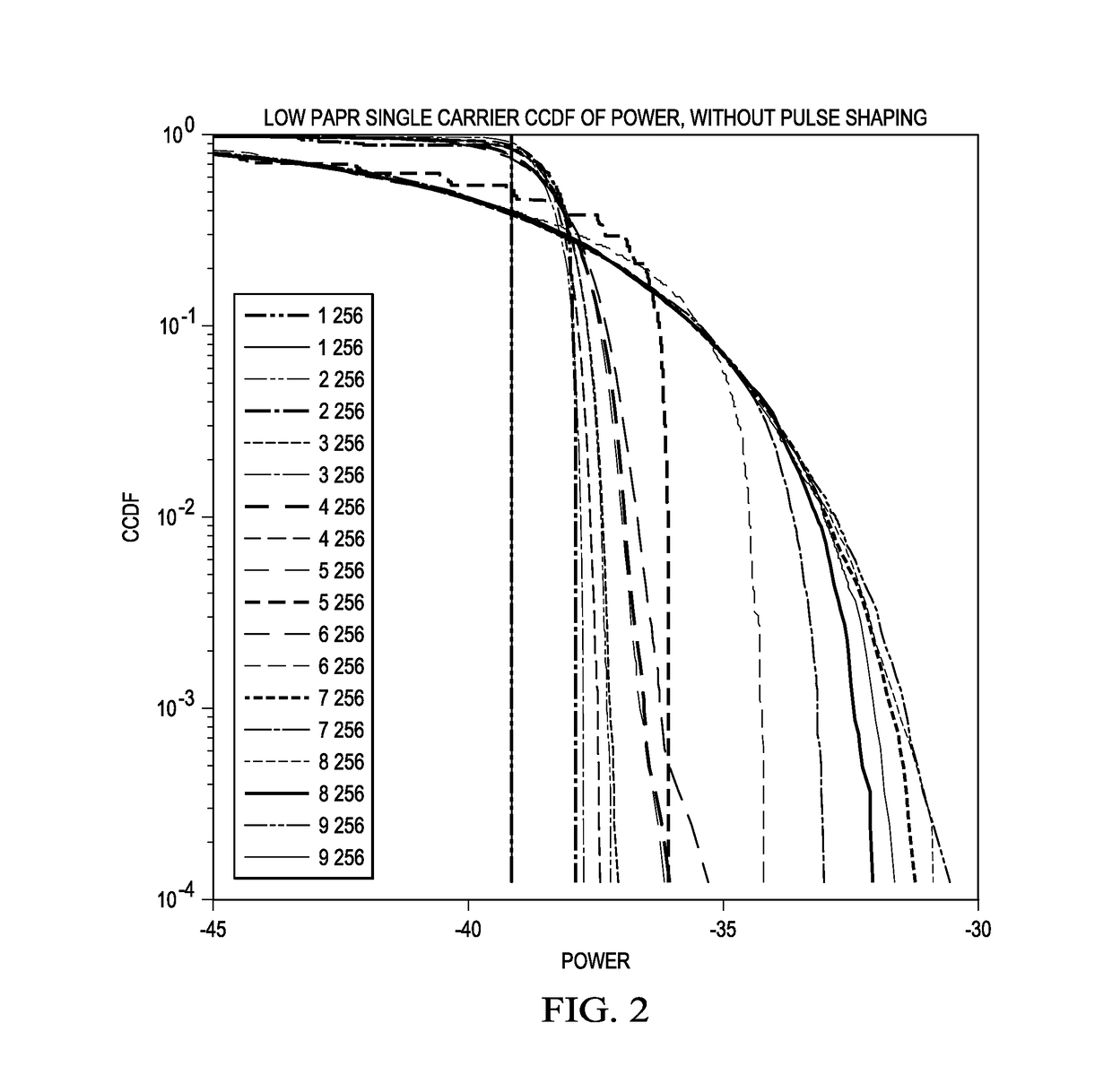Apparatus and Methods for Low PAPR Transmission in MIMO Systems
a technology of apparatus and methods, applied in the field of wireless communication, can solve problems such as design challenges of radio equipment, and achieve the effects of increasing the peak-to-average power ratio, adding cost, and increasing the power ratio
- Summary
- Abstract
- Description
- Claims
- Application Information
AI Technical Summary
Benefits of technology
Problems solved by technology
Method used
Image
Examples
Embodiment Construction
[0020]The making and using of the presently preferred embodiments are discussed in detail below. It should be appreciated, however, that the present invention provides many applicable inventive concepts that can be embodied in a wide variety of specific contexts. The specific embodiments discussed are merely illustrative of specific ways to make and use the invention, and do not limit the scope of the invention.
[0021]FIG. 1 shows a MIMO communications system including a radio access network (RAN) node 110 and one or more UEs 120. The RAN node 110 is also referred to in scenarios as a base station (BS) or a transmission point (TP). Although one RAN node 110 is shown, the system may include any number of RAN nodes 110. Examples of the RAN node 110 include a nodeB, an evolved nodeB (eNB), a WiFi TP, or any other type of network node capable of exchanging wireless signals with the UE 120. Examples of the UE 120 include a smartphone, a mobile phone, a laptop computer, a tablet computer, ...
PUM
 Login to View More
Login to View More Abstract
Description
Claims
Application Information
 Login to View More
Login to View More - R&D
- Intellectual Property
- Life Sciences
- Materials
- Tech Scout
- Unparalleled Data Quality
- Higher Quality Content
- 60% Fewer Hallucinations
Browse by: Latest US Patents, China's latest patents, Technical Efficacy Thesaurus, Application Domain, Technology Topic, Popular Technical Reports.
© 2025 PatSnap. All rights reserved.Legal|Privacy policy|Modern Slavery Act Transparency Statement|Sitemap|About US| Contact US: help@patsnap.com



